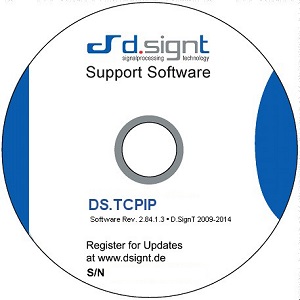
Description
Network connectivity gains more and more importance in industrial applications. Data-base connectivity, browser frontends for configuration and setup, and remote maintainance are but a few features requiring a network interface. Such a network interface must however under no circumstances delay or block the DSP's main task: real-time signal processing.
Some applications might tolerate delays, e.g. biometric access control, but if the DSP is a part of the production environment, any violation of real-time constraints will inevitably cause system malfunction.
